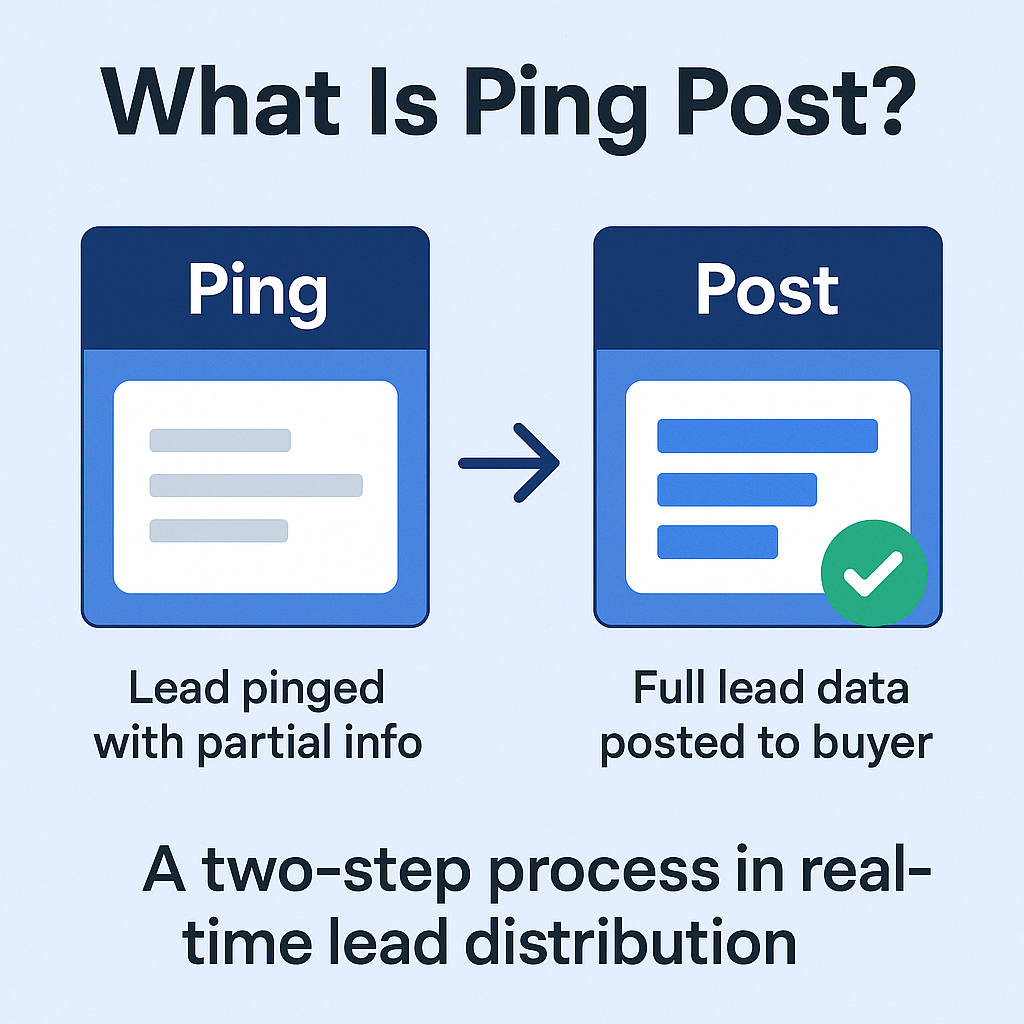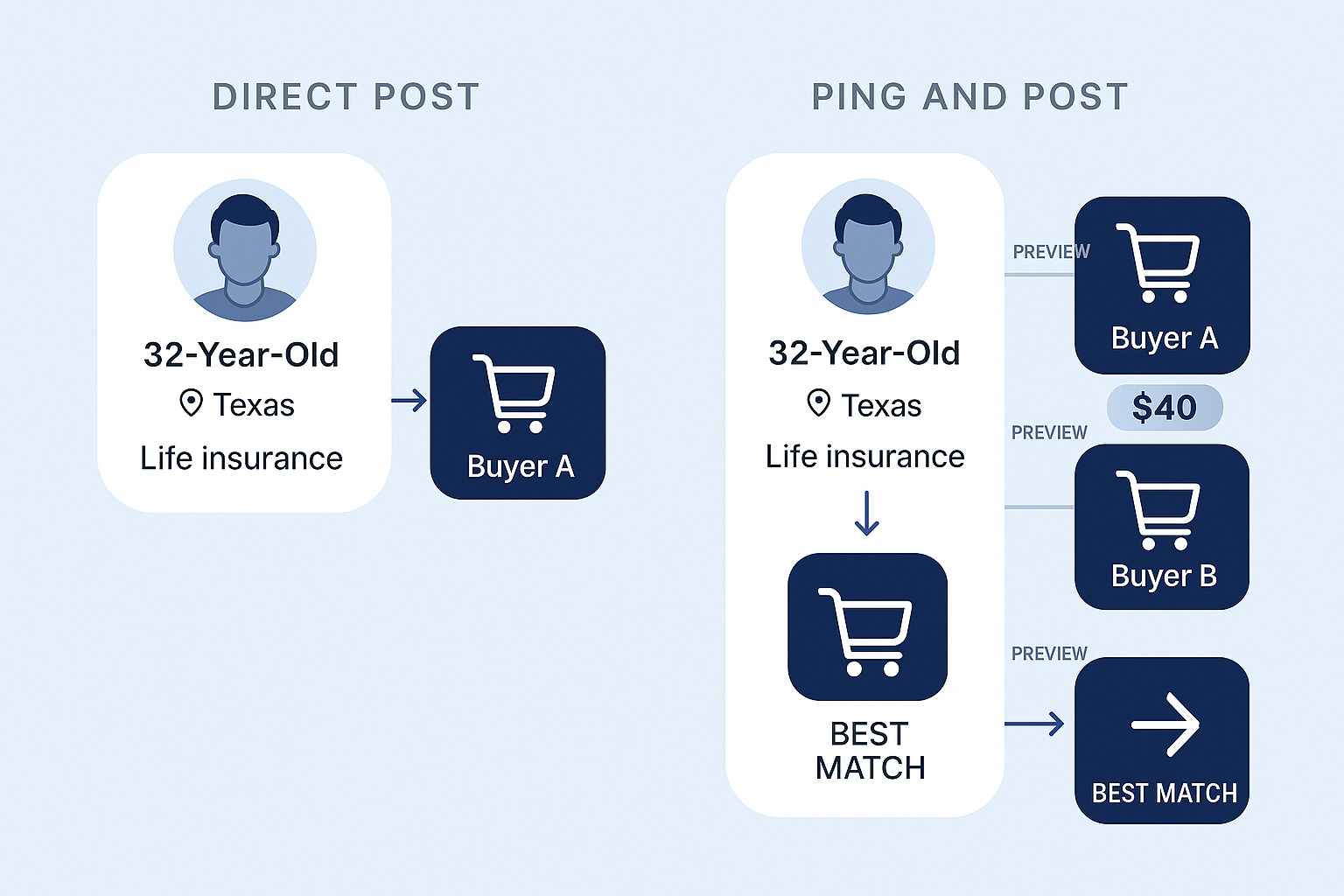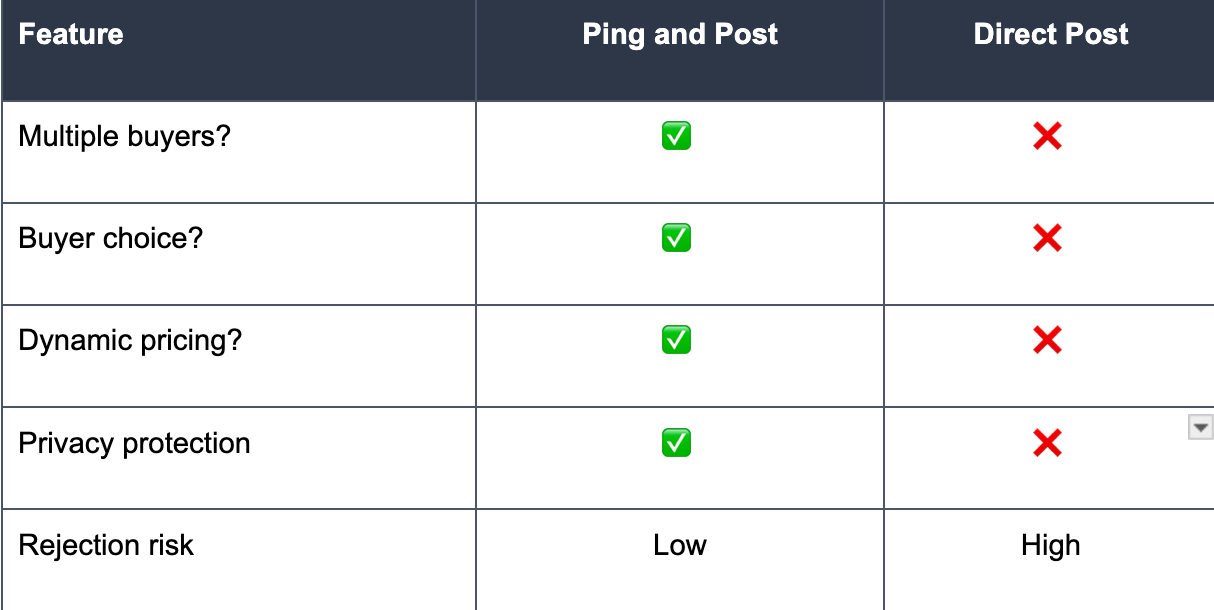Okay, so you've probably heard ping and post in lead generation. People throw the term around like everyone knows what it means.
But if you're thinking, What *is* that?, this is for you.
It's not that hard to get. When you know how it works, you'll see why it makes for really good lead systems that can be profitable.
🔁 Quick Explanation
Ping and post is how you match leads to buyers ASAP. Here's the breakdown:
- You ping possible buyers with part of the lead's info – enough for them to decide if they're interested, but not the person's private details.
- Buyers will then bid or pass.
- If a buyer wants it (wins the bid), you post the complete lead info to them.
It's a quick sale – all happening in seconds.

🧠 Why Bother with Two Steps?
Say you have a lead: A 32-year-old in Texas wants life insurance. If you just send it straight to Buyer A (direct post), it might be a waste if they don't even want it.
Ping and post lets you show it to several buyers first. If they like it, they bid, and it goes to the best buyer.
Now you have competition, wiggle room on price, and leads are more likely to end up with the right buyer.

⚡ Ping = The Sneak Peek
In the ping, buyers get some basic info to size up the lead:
* Location (ZIP, state)
* What they're after (car, health, etc.)
* Maybe a credit score or age
* Where the lead came from
No names, emails, or numbers are shared. They just get the essentials.
This keeps the lead's info safe and makes sure buyers only see what they need to make a choice.
📩 Post = Full Details
If a buyer is in (Yes, I'll take it), they get the whole package:
* Name
* Contact details
* Everything from the form
* Appointment time (if needed)
Now the lead is sold. You can send it to the buyer, put it in a system, whatever.
🎯 Why This Matters If You Sell Leads
Selling leads is about making money. You want to make as much as you can per lead and not have too many rejected. Here's how ping and post helps:
* More say: Buyers see what they're buying.
* Fewer rejects: They agree *before* they get the full lead.
* Better prices: You can sell to the highest bidder.
* Better matches: Leads go to the best fit, not just whoever is next.
Why Buyers Like It Too
Buyers get options with ping and post. They can:
- Only buy leads that fit what they're looking for
- Pay more for good leads
- Change how much they buy or pay depending on how things are going
- Avoid wasting money on leads they can't use
It's like picking out leads instead of just taking whatever comes along.
🛠️ What Makes It Work?
This needs the right setup. Here's what you need:
- A system that can ping lots of buyers really fast
- A way to handle bids
- Rules for where leads go
- Checks to stop fake leads or bad info
- Ways to track and improve things
Some platforms have these things ready to go.
📊 Ping and Post vs. Direct Post
Direct post is okay sometimes, like with special deals. Although ping and post gives you a lot more options.

🚫 Common Misunderstandings
Let's get rid of confusion:
- Ping is *not* spamming. It's just a preview.
- It's for everyone, not just big companies.
- You don't have to build it. Platforms make it easy.
- You still need to fine-tune things to make it work best.
🧩 Bonus: Appointment Ping Post
One thing Standard Information does differently is support ping-post for appointments. That means you can:
- Ping buyers with open appointment times
- Let them grab time slots
- Send leads to appointments as they happen
This is great for fields like home solar, law, and insurance.
📌 Final Thoughts
Ping and post is a way of thinking – moving away from the same old lead selling to something better. Once you get how it flows, it makes sense:
- Want to make more money per lead? Use ping post.
- Want fewer leads returned? Use ping post.
- Want to match leads better? You get it.
In the future, ping and post will be the norm for lead generation.
❓FAQs
Q: What is ping and post? A lead delivery method where you send a preview of the lead (ping) to buyers and deliver full data (post) only to the buyer who accepts or bids highest.
Q: What’s the benefit of using ping post? You get better buyer matches, higher payouts, and lower rejection rates — with dynamic bidding in real time.
Q: Is ping and post the same as real-time lead routing? Yes — it’s a form of real-time routing, but with the added layer of buyer evaluation before delivery.